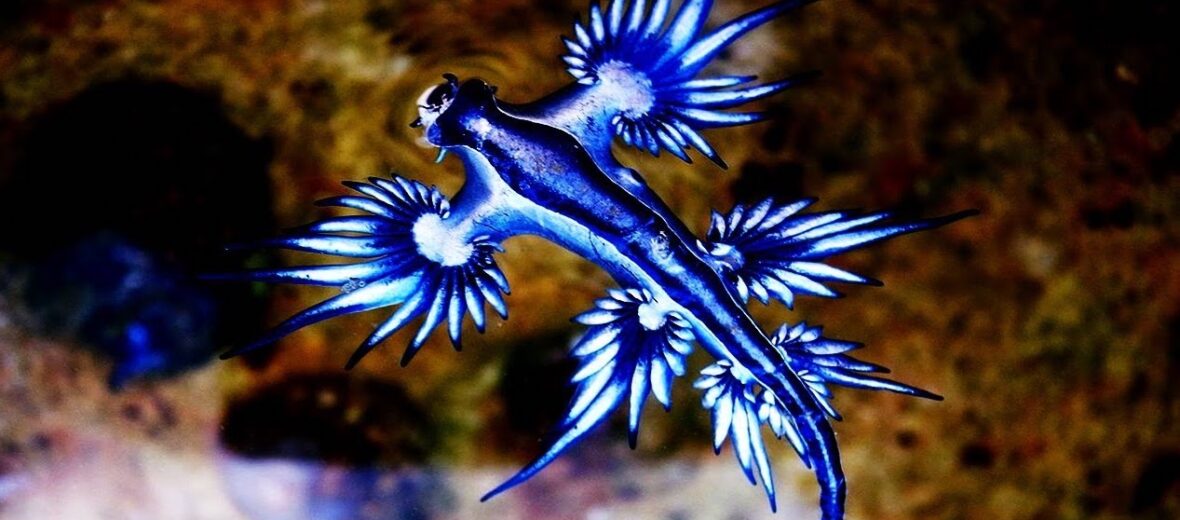
The blue sea dragon, aka sea swallow, blue glaucus, blue sea slug, blue angel, and blue ocean slug, is a nudibranch that calls the Pacific, Atlantic, and Indian Oceans its home. They prefer temperate and tropical waters and pack a punch. They may be small, they may look delicate, but they hide a secret. The exotic pet trade, pollution, and ocean acidification are all causing these cool critters to dwindle in numbers. They are listed as Endangered by the IUCN.
First the Stats…
Scientific name: Glaucus atlanticus
Length: Up to 1.2 inches
Lifespan: Up to 1 year
Now on to the Facts!
1.) They are pelagic (float upside down).
2.) These critters float by swallowing air.
3.) Blue sea dragons prey on the Portuguese Man-o-War and siphonophores.
4.) A group of sea dragons is called a blue fleet.
5.) Sea dragons feed on and reuse the stinging nematocysts of their prey to their defensive advantage.
But wait, there’s more on the blue sea dragon!
6.) When these diminutive creatures reuse the stinging cells of their prey, they actually intensify their potency.
7.) The blue glaucus is a hermaphrodite (produce eggs and sperm). However, they do need to mate with another dragon in order to produce eggs.
Did you know…?
If threatened, the blue dragon nudibranch can inflict a potentially lethal sting… multiple times.
8.) After mating, both blue sea slugs produce eggs to later be fertilized.
Now a Short Blue Sea Dragon Video!
Also, check out the Critter Science YouTube channel. Videos added frequently!
Want to suggest a critter for me to write about? Let me know here.



